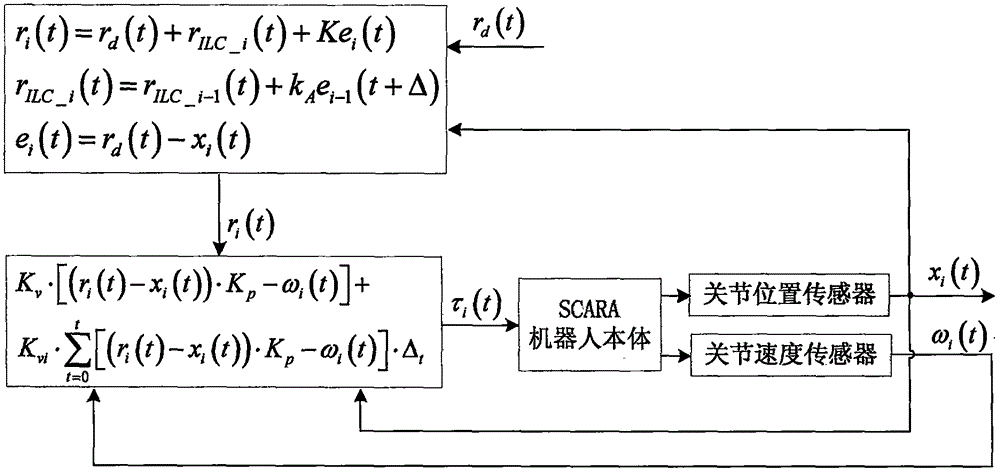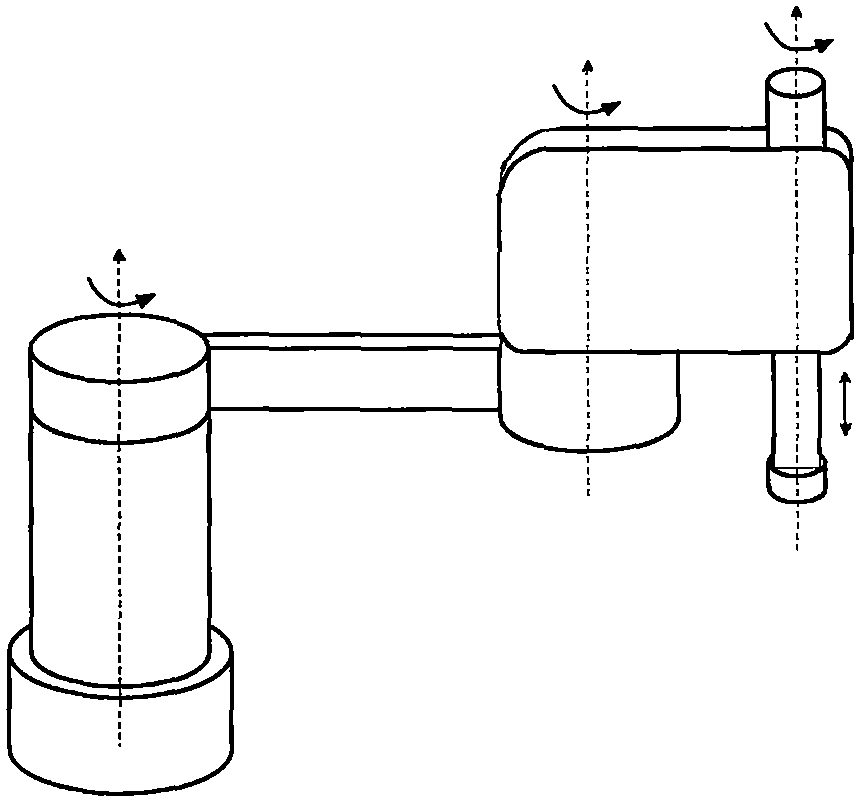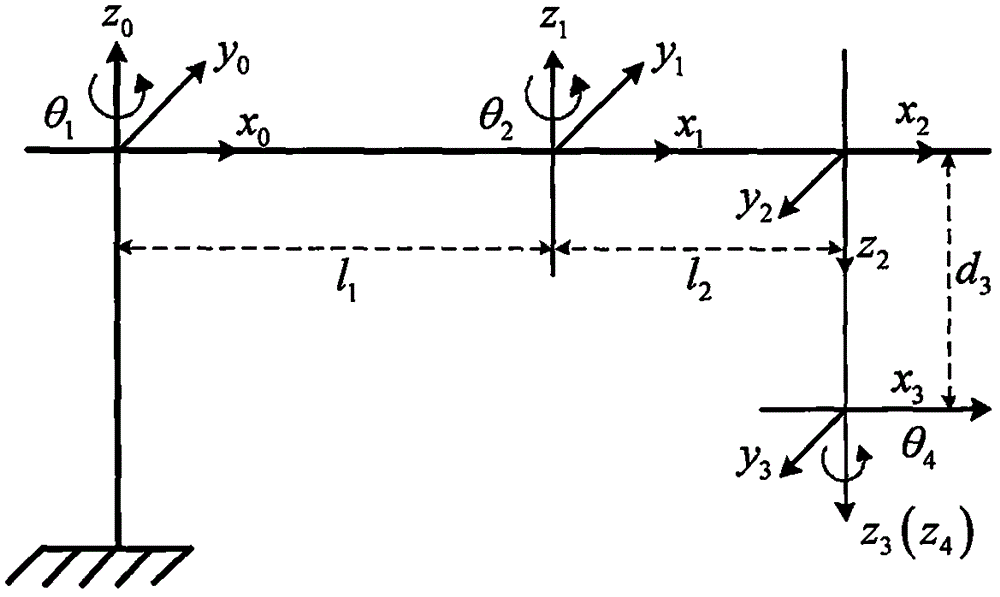SCARA robot trajectory tracking control method based on prediction indirect iterative learning
An iterative learning and trajectory tracking technology, applied in the direction of program control manipulators, manipulators, manufacturing tools, etc., can solve problems such as inability to online modification, driver torque signal compensation, etc., to improve tracking accuracy, speed up iterative convergence speed, and overcome repeated unknown interference. Effect
- Summary
- Abstract
- Description
- Claims
- Application Information
AI Technical Summary
Problems solved by technology
Method used
Image
Examples
Embodiment Construction
[0029] In order to make the purpose, technical solution and beneficial effects of the present invention clearer, the present invention will be described in further detail below with reference to the accompanying drawings.
[0030] The present invention provides the structural diagram of the SCARA robot trajectory tracking control method based on predictive indirect iterative learning, such as figure 1shown. The dual closed-loop feedback controller acts on the robot body to track the joint position and joint velocity. On this basis, a predictive iterative learning controller with feedforward function is designed to improve the dynamic performance of the dual closed-loop feedback controller and improve the trajectory Tracking accuracy. According to the joint position data output by the encoder, the predictive iterative learning controller uses the position tracking error at the sampling time t+Δ of the previous running batch to optimize and adjust the given position at the samp...
PUM
 Login to View More
Login to View More Abstract
Description
Claims
Application Information
 Login to View More
Login to View More - R&D
- Intellectual Property
- Life Sciences
- Materials
- Tech Scout
- Unparalleled Data Quality
- Higher Quality Content
- 60% Fewer Hallucinations
Browse by: Latest US Patents, China's latest patents, Technical Efficacy Thesaurus, Application Domain, Technology Topic, Popular Technical Reports.
© 2025 PatSnap. All rights reserved.Legal|Privacy policy|Modern Slavery Act Transparency Statement|Sitemap|About US| Contact US: help@patsnap.com



